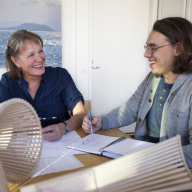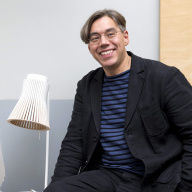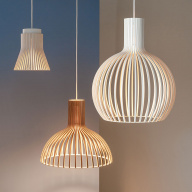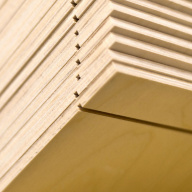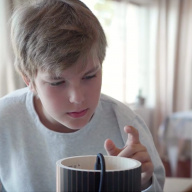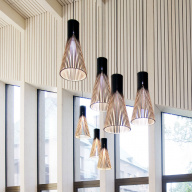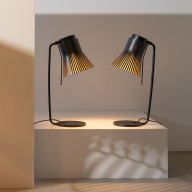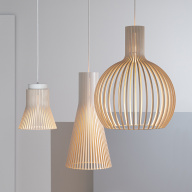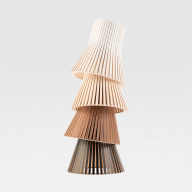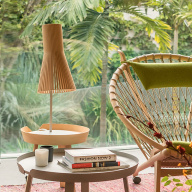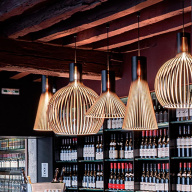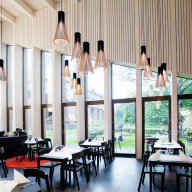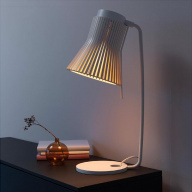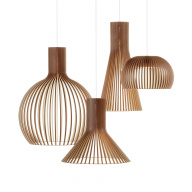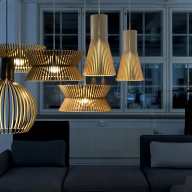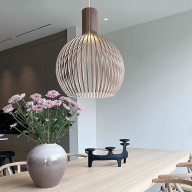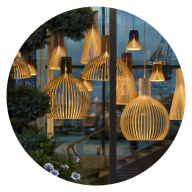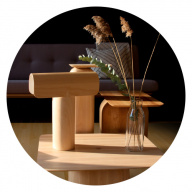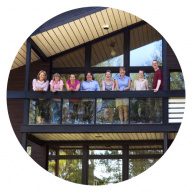Our battle against design piracy – lessons learned by Tuula Jusélius
Few would think that founder of Secto Design Tuula Jusélius spends half of her working hours tracking down and stopping international criminals. Yet she has been doing this for a decade.
Secto Design lamps are copied so often around the world that Mrs. Jusélius and her colleague, our IPR coordinator, spend a large part of their working day searching for the thousands of counterfeit lamps on the market, removing them from online marketplaces and trying to reach the manufacturers. Every year, Secto Design sends hundreds of messages to sellers of design copies.
All this takes a lot of time for our small, Finnish, family-owned company. Twenty-seven cases have led to legal action, and Secto Design has not yet lost a single case. However, legal proceedings can last for years, up to 8 years at the longest.
“I know that some designers have given up, because protecting the copyrights is hard work,” says Mrs. Jusélius.

"Fighting against copying is a big effort for a small company. In many years, Secto Design has spent more money on this fight than on marketing," says Tuula Jusélius.
Secto Design has not wanted to back down for three reasons. These reasons also explain why consumers should not buy fake copies, but original design lamps.
The first reason has to do with the very heart of Secto Design, the timelessness of our lamps. They have been made to last for decades, from one generation to the next. Since we do not produce a new collection every spring, but create classics, fighting copies is essential.
“In the rapid cycle of the trend business, you do not need to care about piracy, because you will launch a new collection soon anyway. But if we want to exist 20 years from now, we need to fight against copying,” says Tuula Jusélius.
According to Mrs. Jusélius, the producers of design copies work fast. If Secto Design presents a new model, one that the team may have been working on for a couple of years, it will only take some weeks before a low-quality copy can be found online. The copy is always sloppily thrown together and is just aiming for the same look and taking advantage of the persistent, long-term, expensive development efforts of Secto Design.

The copies are made with lower quality raw material, and the craftsmanship is rough.
Architect Seppo Koho, who has meticulously designed all Secto Design lamps, has often been saddened to see so many copies of his products. What feels especially disheartening is seeing another designer present a model as their own, even when it is clearly a copy.
“What kind of person just goes and steals someone else’s work?”
Secondly, the copies present a number of origin and safety issues, which is another reason to fight against them. You can never be certain about the background of a copied lamp, unlike the original.
If you buy an authentic Secto Design lamp, you can be sure that it has been handmade in Finland and no child or slave labour has been used to make it. You also know that the lamps are environmentally friendly, made from responsibly grown, sustainable PEFC certified birch. Secto Design lamps are always electrically safe as they have been made according to strictly regulated safety certificates. Design copies often come with fake certificates.
Dozens of fake copies have been stored by Secto Design as evidence for legal action.
“The majority of them look similar to a Secto Design lamp from afar, but upon closer inspection, you can see their cheaper, inferior quality. They have been made with lower quality raw material, and the craftsmanship is rough,” says Tuula Jusélius.

Dozens of fake copies are stored by Secto Design. They have been obtained for legal proceedings.
Copies are often sold using images stolen from Secto Design’s website. This is common practice for criminals. Typically, the low-quality product does not match the image at all. Sometimes the buyer does not even receive the product, because some websites use stolen images only to collect addresses and account details.
Tuula Jusélius believes that many people do not understand that counterfeit products and copies are associated with international organized crime. The third reason to continue the never-ending fight for copyrights is to increase public awareness of the issue.
Mrs. Jusélius has also spoken about the issue at the European Commission, and she is pleased to see that the EU is putting together a new toolbox for fighting this type of crime.
“The people who run the counterfeit business professionally are skilled criminals and good at hiding their traces. They go by one name in one country and another name in another country, and they have several companies and addresses, often mailboxes.”
It may be difficult to track down the original producers of design copies, because their dealers typically do not want to reveal the source of the copies, before facing criminal charges themselves.
“At times, we feel like detectives at work, chasing after small clues. But we also find it satisfying, when the criminals finally get caught.”

One way to identify an authentic Secto Design lamp is to look for our seal of authenticity, a special hologram tag inside the lamp, which has been added to the products since 2017.
Secto Design cooperates with Be Original Americas, an organisation that combats counterfeit design, supports authentic creative work and protects the history of design and the future of innovation.





